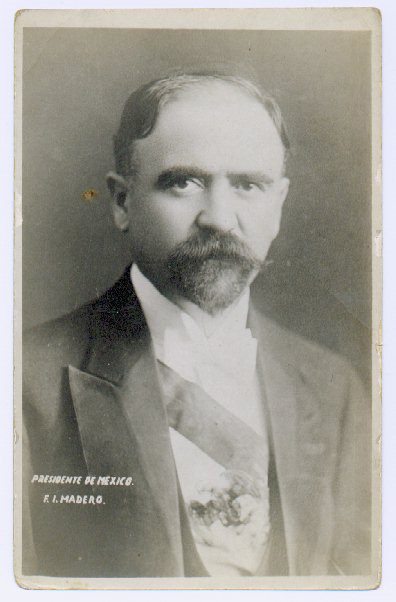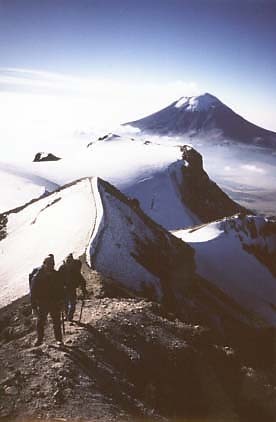COUNTRY’S LEADING ARCHITECT DIES IN CHOLERA EPIDEMIC.
During the month of October. . .
MASSACRE IN MEXICO CITY.
DISCONTENT AT PRESIDENT’S REELECTION
GREAT NEW WORLD DISCOVERED!
“DEAR KING, WE NOW CONTROL THE COUNTRY…”
MOTHER ORDERS EMPEROR TO STAY PUT!
U.S. GIVES BACK DISPUTED TERRITORY.
October 1, 1542 The decision is made to refound the city of Guadalajara in its present location, in the valley of Atemajac. Three previous attempts to found the city had not prospered, but the site chosen this time proved more propitious.
2, 1535 The first Viceroy of New Spain, Antonio de Mendoza, sails into the port of Veracruz, to assume his post. He continues as Viceroy until 1550.

MASSACRE IN MEXICO CITY.
2, 1968 Only ten days before the opening ceremony of the Olympic Games in the city, a rally in the Plaza of the Three Cultures, Tlatelolco, is brought to a violent end when security forces open fire on students. Hundreds of students are killed and many more are seriously wounded.
2, 1976 Hurricane Liza, with winds up to 210 kilometers an hour, roars across the Baja California peninsula and rips into Mazatlan, causing more than 600 deaths, many of them due to the collapse of an earth dam near La Paz.
3, 1824 The first Federal Constitution of the United States of Mexico is approved by the Congress of the Union. The next day, it becomes law, making Mexico a democratic Republic comprised of nineteen States, four Territories and a Federal District. Present-day Mexico is comprised of thirty-one states and the Federal District.
3, 1865 Emperor Maximilian signs a decree by which enemy soldiers can be shot within twenty-four hours of capture by his imperialist forces. General Bazaine, who first proposed the idea, immediately orders his troops to shoot first and forget about prisoners!
3, 1875 Gerardo Murrillo (who later changes his name to Dr. Atl) is born in Guadalajara. Atl becomes a writer, painter, vulcanologist and indefatigable campaigner for the creation of a “super-city” for the artistic and intellectual elite. He was a leading figure in the Mexican art revolution of the early twentieth century.
DISCONTENT AT PRESIDENT’S REELECTION
4, 1910 General Porfirio Díaz claims to have been reelected President for the period 1910-16, having already been in power, virtually without a break, for thirty years. The resulting public discontent sees Francisco “Pancho” Villa taking up arms in Chihuahua, in support of Madero’s belief that re-election should not be legal. So begins the Mexican Revolution.
4, 1974 The Territory of Southern Baja California is officially declared a State, as of October 8.

6, 1910 Francisco Madero, recently escaped from prison in San Luis Potosí, launches his campaign of “Free Vote – No Reelection”, a slogan still stamped on innumerable government documents even today. The same day (just by coincidence) the National Seismological Service is inaugurated in Mexico City for the study of earthquakes. The next few years see plenty of upheavals, both political and geological…
6, 1972 A terrible train wreck, near Saltillo, results in the deaths of 208 passengers. More than 1,200 are injured.
9, 1870 Because of an epidemic, the capital of the State of Guerrero (which includes the resort port of Acapulco) is relocated from Tixtla to Chilpancingo.
10, 1914 A National Revolutionary Convention is held in Aguascalientes (in the Morelos Theater) at which followers of Madero, Carranza, Villa and Zapata agree to nominate Eulalio Gutiérrez as President.
GREAT NEW WORLD DISCOVERED!
12, 1492 Christopher Columbus “discovers” the New World, landing on the island of Guanahani, which he baptized San Salvador (today Watling Island). This day is still a Mexican National holiday, “Dia de La Raza”.
12, 1921 The first Secretary of Education takes office. José Vasconcelos gains international renown as a dynamic and progressive educator.
12, 1968 The XIX Olympiad opens in Mexico City. One of the outstanding performances at these games was the long-jump by American Bob Beaman of 8.90 meters (29.2 feet), which broke the previous World and Olympic records by an astonishing 2 feet. Beaman’s record will last until 1990. The long-jump is won by American Dick Fosbury, whose distinctive headfirst “Fosbury Flop” method is now widely used.
13, 1527 Pope Clement VII orders the construction of a cathedral in Mexico City. The present cathedral, built very near the former Great Temple, was begun in 1573.
“DEAR KING, WE NOW CONTROL THE COUNTRY…”
15, 1524 From the former Aztec capital, Tenochtitlan, Hernán Cortés sends his fourth Letter to King Charles V of Spain, detailing the exploration and conquest of Oaxaca, Tabasco, Michoacán and Colima. He proposes a voyage to explore Baja California and to reach the Strait of Magellan. 173 years to the day later, the town of Loreto, which becomes the capital of the Californias, is founded by Father Juan María de Salvatierra.
16, 1916 A National Military factory is created, for the production of arms. Arms production is placed in the hands of civilians, not soldiers.
17, 1953 Mexican women are accorded the full rights of citizenship, including the right to vote in elections and right to hold elected office.
18, 1586 The English pirate, Sir Francis Drake, captures the Manila Galleon (or China Boat) off the coast of Cabo San Lucas, Baja California.
19, 1810 Father Miguel Hidalgo, proclaims freedom for slaves and the abolition of the tribute system.
19, 1847 Following an intense bombardment of the port by ships of the American Navy, 600 U.S. Marines capture Guaymas.

20, 1695 Popocatepetl, the volcano just outside Mexico City, erupts for the first time in thirty years. The volcano has renewed activity in recent years, prompting mass evacuations of nearby villages on several occasions.
20, 1820 The U.S. and Mexico sign a treaty by which the Mexican Territory of Florida becomes part of the U.S.
20, 1895 The National Census reveals a total population in the country of 12,570,195 inhabitants. 105 years later, the 2000 census finds a population of 97.5 million.
MOTHER ORDERS EMPEROR TO STAY PUT!
21, 1866 Emperor Maximilian, in Orizaba, Veracruz, is thinking about abandoning his Mexican Empire when he receives a letter from his mother, the Empress Sophia, telling him that he would be unwelcome in Vienna, and would be better advised to defend his “throne” in Mexico.
21, 1918 An outbreak of Spanish influenza hits the city of Monterrey.
22, 1575 The city of Aguascalientes is founded.
22, 1981 The North-South dialogue, convened by Mexican President José López Portillo, is held in Cancún. Twenty-two heads of state attend.
23, 1821 Mexican Independence is proclaimed.
24, 1533 Hernán Cortés arrives in Manzanillo to see his “Southern Ocean” expedition set sail.
25, 1767 The Jesuits, expelled from New Spain, leave for exile from Veracruz harbor. Most of them go to Italy.
U.S. GIVES BACK DISPUTED TERRITORY.
27, 1967 U.S. President Lyndon B. Johnson hands back 333 hectares of land near El Paso, known as “El Chamizal”, to his Mexican counterpart Gustavo Díaz Ordaz. This land had been in dispute since 1864, after the Rio Bravo (or Rio Grande as the U.S. calls it) changed its course.
28, 1624 A Dutch pirate fleet, waiting at anchor in Acapulco for the arrival of the China Boat, with the intention of capturing it, gets tired of waiting, and sets sail for the East Indies.
28, 1937 The Mexican Anthropology Society is founded. As well as social anthropologists, this society includes ethnologists, linguists and archaeologists.
28, 1821 The Province of Costa Rica, Central America, proclaims its independence from Spain, and its adherence to the Mexican Empire.
30, 1915 The Observatory of Tacubaya (Mexico City) opens a new section dedicated to Geographical and Climatological studies.
31, 1861 The London Convention. The leaders of France, Spain and England sign a treaty for joint intervention in Mexico. They agree to send in their armed forces in order to reclaim the debts that Mexico has with their countries, payments on which were suspended by Benito Juárez on June 17.
The main source for this series is Efemérides Mexicanas by Noé Solchaga Zamudio and Luisa A. Solchaga Peña, published in two volumes by Editorial Avante, Mexico City, 1983.
